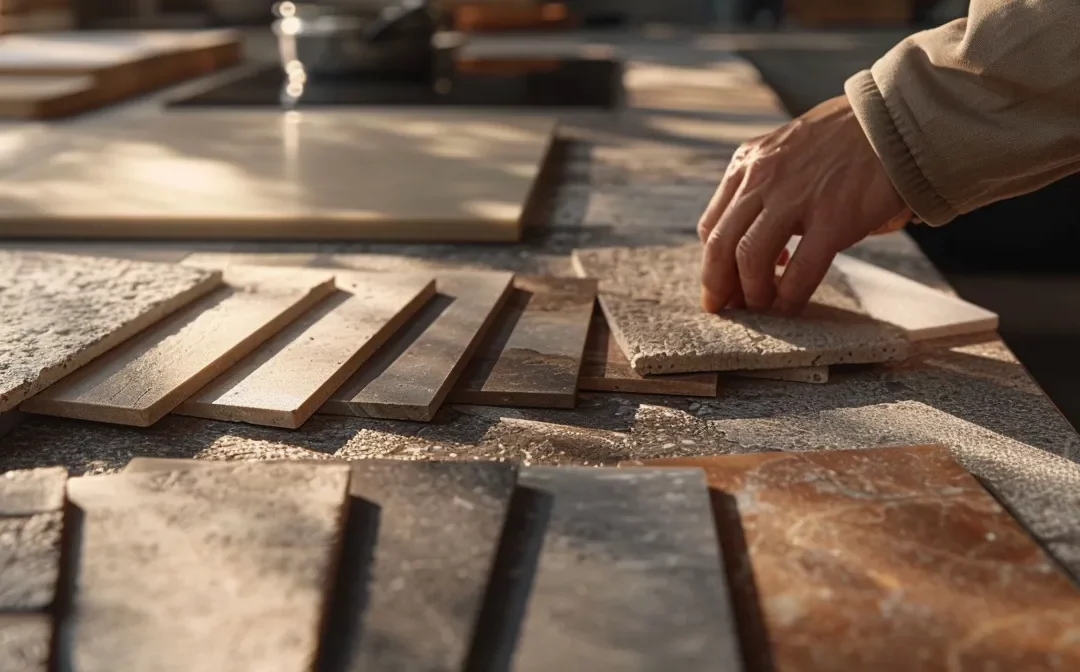Polyester vs. Polyurethane: Which Is Better for Countertop Resurfacing?
When planning bathroom and kitchen resurfacing, choosing the right material can significantly impact both functionality and design. Polyester and polyurethane offer distinct advantages and considerations, particularly when dealing with moisture resistance and stain resilience. The Master Builders Association Victoria emphasizes the importance of selecting a durable solution to protect countertops from everyday wear and tear. Understanding the differences between these two coatings not only aids in making informed decisions but also ensures that your renovated surfaces maintain their beauty over time. Keep reading to uncover the essential factors influencing your choice between polyester and polyurethane for your countertop needs.
Key Takeaways
- polyester resin offers durability but may struggle with high temperatures and certain chemicals
- polyurethane provides superior resistance to wear, moisture, and chemicals in kitchen environments
- consider environmental impacts when choosing between polyester and polyurethane for countertop resurfacing
- initial costs for polyester are lower, but polyurethane may offer better long-term performance
- the aesthetic finish options vary significantly between polyester and polyurethane, impacting your design choices
Understanding the Basics of Polyester for Countertop Resurfacing
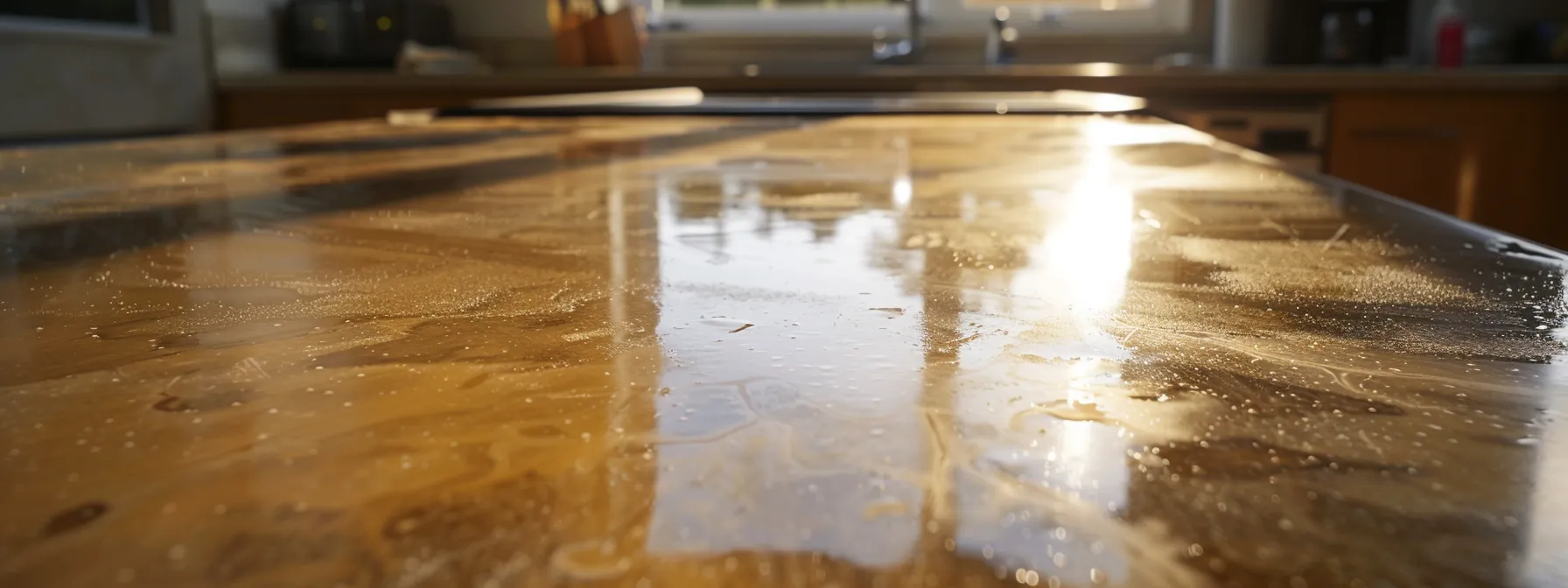
Understanding the composition of polyester resin is vital for making an informed choice about bathroom and kitchen resurfacing. This synthetic material consists of multiple components, including a base resin and specific fillers that enhance its properties. One notable advantage of using polyester in your kitchen surfaces is its ability to resist mold and withstand wear over time, making it an excellent option for those who prioritize durability. However, keep in mind that polyester may not be as resilient against high temperatures and certain chemicals, which can limit its performance on kitchen countertops. Additionally, the application of dye in polyester can yield stunning finishes, but be cautious about dust accumulation during the curing process, as it can affect the final appearance. Balancing these factors will help you determine if polyester is the right choice for your resurfacing project.
The Composition of Polyester Resin
When considering polyester for countertop resurfacing, it’s essential to recognize its fundamental composition. Polyester resin is primarily made from a liquid base that combines with various agents, including wax and fillers, to enhance its attributes. This interaction creates a robust medium that can provide lasting results with the proper application and care.
- Liquid base forms the foundation of polyester resin.
- Wax and fillers improve the resin‘s durability and finish.
- The composition contributes to the overall performance of resurfaced countertops.
Advantages of Polyester in Countertop Applications
Choosing polyester resin for bathroom and kitchen resurfacing offers several advantages that you may find beneficial. Its durability makes it a practical choice for high-traffic surfaces, while its compatibility with additives allows for versatile finishes. You can apply coatings with a spray technique that ensures an even application, enhancing the overall aesthetic with a polished look:
- Resistant to moisture and mold, ensuring longevity.
- Easy application methods, including spray techniques.
- Can be adjusted with additives like caulk or oils for desired characteristics.
- Compatible with polystyrene, enhancing impact resistance.
Limitations of Polyester for Kitchen Surfaces
While polyester offers a range of benefits, it does have some drawbacks for kitchen surfaces bathroom and kitchen resurfacing. Its susceptibility to certain solvents can lead to adverse chemical reactions, compromising its integrity over time. For kitchen environments, where stainless steel appliances and surfaces often coexist, considering polyurethane may be a better choice, as it tends to be more environmentally friendly and resistant to high temperatures and stains Master Builders Association Victoria.
Having grasped the fundamentals of polyester, it’s time to shift gears and discover the remarkable properties of polyurethane. This material plays a pivotal role in achieving a stunning finish for your countertops, adding durability and elegance.
Exploring Polyurethane’s Role in Countertop Finishing
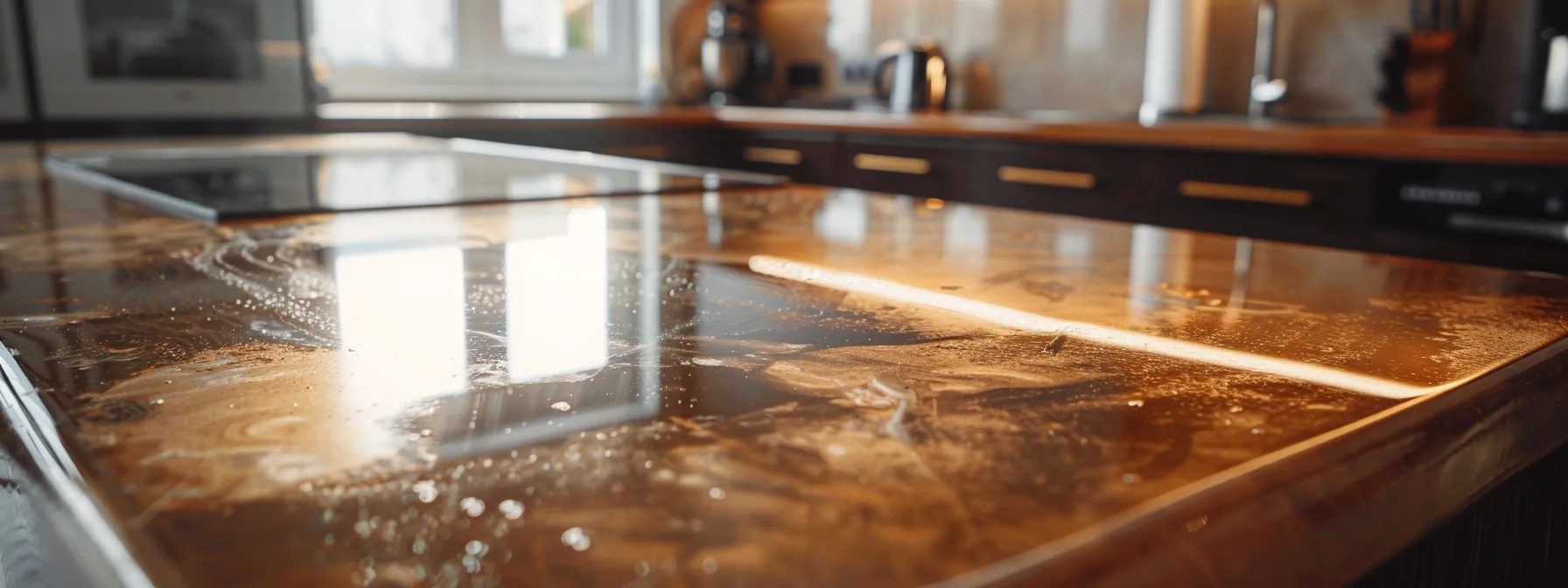
Polyurethane coatings present a robust alternative for countertop resurfacing, standing out for their unique properties. These coatings excel in providing a solid protective layer, effectively resisting damage from corrosion and wear. Unlike polyester, polyurethane offers superior durability, particularly for butcher block surfaces that require resilience against spills and stains. The benefits of using polyurethane over polyester extend to its ability to handle organic compounds better, making it an excellent choice for kitchen environments. As you evaluate your options, understanding when to choose polyurethane will guide you toward making an informed decision for your specific countertop needs.
Key Properties of Polyurethane Coatings
Polyurethane coatings provide a remarkable protective layer for various surfaces, including butcher block countertops and bathtubs. Known for their resistance to wear, these coatings maintain their integrity even in high-traffic areas, ensuring lasting performance. Additionally, polyurethane applications can incorporate foam additives for enhanced durability, making them ideal for environments where spills and stains are common, like kitchens and bathrooms with cement surfaces.
Benefits of Using Polyurethane Over Polyester
Choosing polyurethane over polyester for countertop resurfacing can significantly impact your project’s outcome. Polyurethane offers a higher gloss finish, enhancing the aesthetics of cabinetry and substrates, making your woodworking projects stand out. Additionally, its superior resistance to moisture and chemicals makes it ideal for environments like kitchens and showers, where durability and easy maintenance are crucial.
When to Choose Polyurethane for Your Countertops
Selecting polyurethane for your countertops is particularly advantageous in construction projects that involve high-performance needs. This material excels in environments where exposure to volatile organic compounds is a concern, ensuring that your surfaces remain safe and stable over time. Furthermore, if you are utilizing fiberglass or other plastic elements in your design, polyurethane bonds well, offering a practical solution that enhances both functionality and aesthetics.
Understanding how polyurethane enhances countertop finishes leads us to an important comparison. Let’s dive into the durability and lifespan of polyester versus polyurethane and see which material truly stands the test of time.
Durability and Lifespan: Polyester vs. Polyurethane
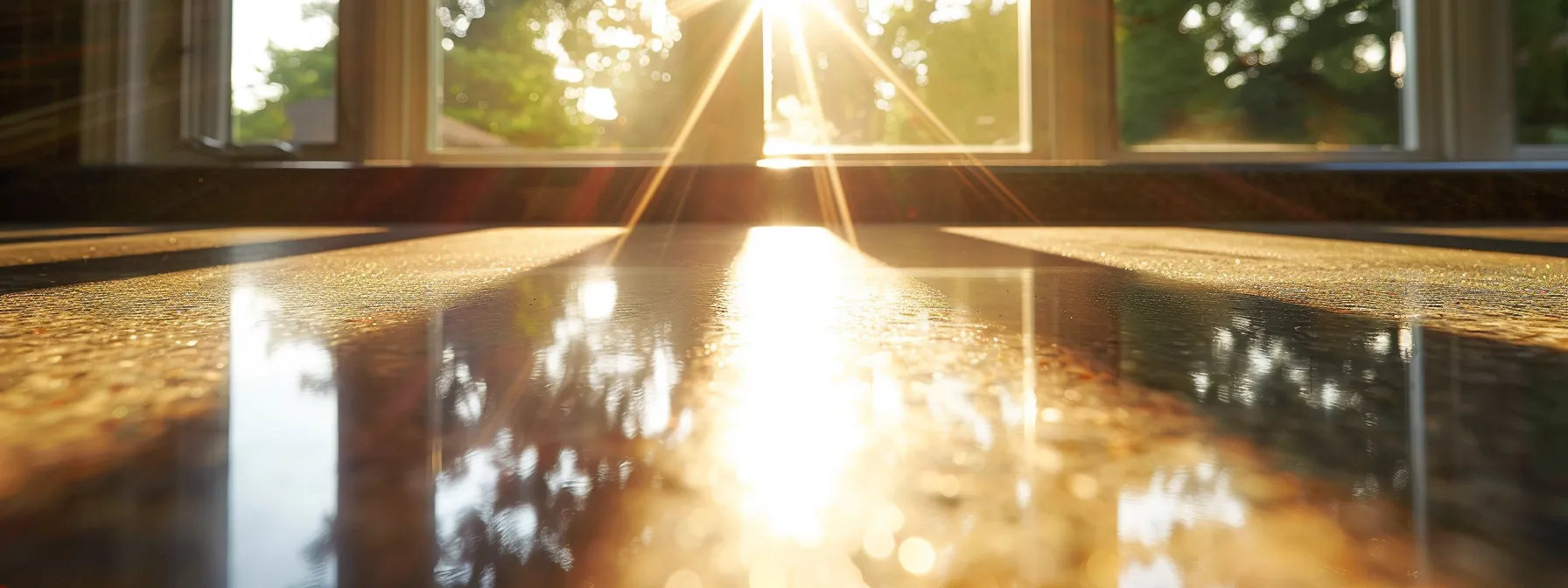
In the comparison of durability and lifespan between polyester and polyurethane, understanding how each material withstands daily wear and tear is essential for making the right choice for your countertop resurfacing. Polyester, commonly used in applications like bathtub refinishing and tile resurfacing, offers a strong, glossy finish, but its resilience can diminish over time, particularly under heavy use. On the other hand, polyurethane, often preferred for its robust varnish-like properties, provides greater endurance and longevity, standing up well against spills and stains. Assessing these factors can help you choose the best brand and product that will meet your specific needs and expectations for your surfaces.
How Polyester Stands Up to Daily Wear and Tear
Polyester resin delivers a glossy finish that’s visually appealing, yet it may face challenges when it comes to everyday wear and tear. In environments like a bathroom, the high humidity can lead to issues such as etching, which diminishes its aesthetic appeal. Furthermore, while you can use sandpaper to restore its surface, frequent abrasion may weaken the material over time, raising concerns about its longevity and potential toxicity in older formulations.
Assessing Polyurethane‘s Endurance and Longevity
When you evaluate polyurethane‘s endurance, it’s clear it stands out in various applications, particularly for concrete or marble surfaces. Its resilience against abrasives, such as sand, reduces the impact of daily use. Additionally, polyurethane‘s compatibility with acrylic paint allows for seamless aesthetic enhancements without compromising its longevity, making it an ideal choice for any countertop resurfacing project.
As we explore the strengths of polyester and polyurethane, let’s shift our focus to how these materials influence the visual appeal of your space. The aesthetic outcomes of each option can make a significant difference in your renovation, so let’s compare their unique characteristics.
Comparing the Aesthetic Outcomes of Polyester and Polyurethane
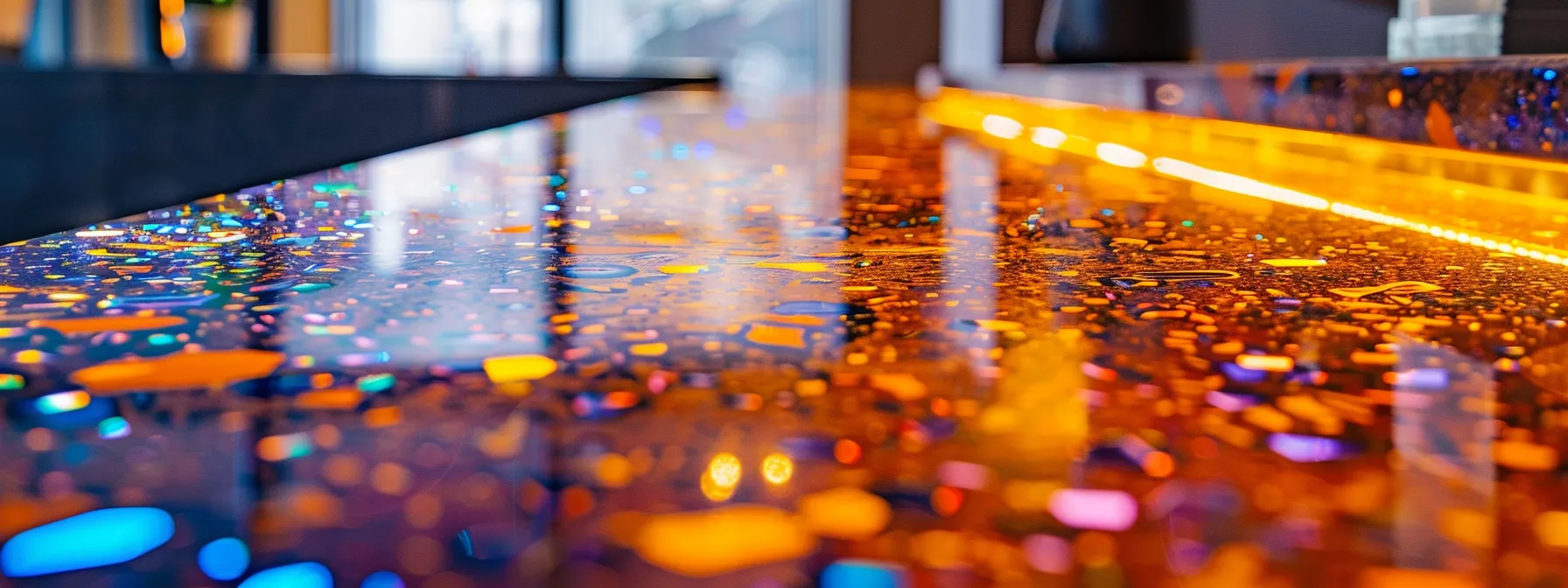
The aesthetic outcomes for countertop resurfacing depend significantly on your choice between polyester and polyurethane. Polyester-coated surfaces typically offer a high-gloss finish, enhancing the natural beauty of materials like mineral composites. This approach showcases the underlying colors and patterns, creating a striking visual effect. On the other hand, polyurethane finishes provide a variety of options tailored to your design preferences, with an array of textures and sheens that can suit diverse tastes. The adhesion properties of both materials play a critical role in achieving a smooth, durable surface that withstands everyday use. With the knowledge of the finishes available in the market, you can make an informed decision that balances quality and price while elevating the aesthetics of your countertops.
The Finish Quality of Polyester-Coated Countertops
The finish quality of polyester-coated countertops is defined by a smooth, glossy surface that highlights the beauty of your choice of material, whether it’s porcelain or granite. This quality is achieved through a specific mixture that includes additives for hardness, which enhances resilience against scratches and everyday wear. When applying finishes, using a brush can help achieve an even coat, ensuring that every corner, including around the sink, is covered effectively.
Visual Appeal and Varieties in Polyurethane Finishes
Polyurethane finishes offer a wide array of visual options, enhancing both aesthetic appeal and functionality. You can achieve various styles, from high-gloss coats that accentuate granite surfaces to more subdued, matte finishes that provide a sophisticated look without overpowering the design. Additionally, the versatility of polyurethane allows for unique applications, such as a gelcoat finish, which provides a durable layer that protects underlying materials while enhancing their beauty.
- High-gloss polyurethane adds shine to granite surfaces.
- Matte finishes provide elegance without overwhelming designs.
- Gelcoat applications enhance durability while beautifying surfaces.
As you weigh the visual appeal of polyester and polyurethane, cost becomes a pivotal factor in your decision. Let’s break down the financial implications of choosing between these two coatings.
Cost Analysis: Polyester and Polyurethane Coatings
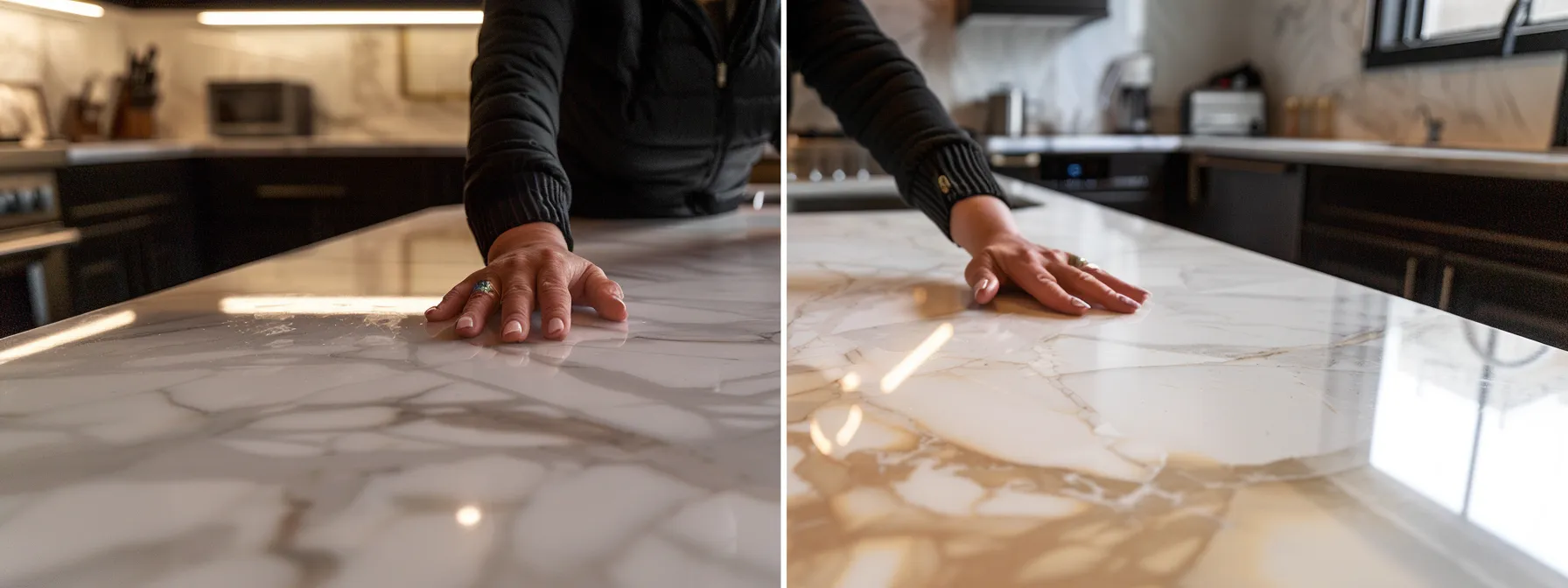
Evaluating the cost of countertop resurfacing involves understanding both the initial installation and ongoing material expenses associated with polyester and polyurethane coatings. Polyester offers a more budget-friendly option at the onset, primarily due to its simpler application process. However, consider factors such as how humidity can affect the longevity of the material, potentially leading to additional costs over time. On the other hand, polyurethane applications often come with a higher price tag, attributed to their advanced polymer technology that enhances durability and performance, especially in environments prone to spills and odors. By weighing the installation costs alongside the durability and maintenance needs of each option, you can make a more informed decision that best suits your kitchen or bathroom flooring demands while accommodating the material compatibility with metal and other surfaces.
Initial Installation and Material Costs for Polyester
When considering the initial installation and material costs for polyester coatings, you will find that it typically presents a more affordable option than polyurethane. The straightforward application process allows you to save on labor costs, while materials such as putty and seal coat add to its budget-friendly appeal. Keep in mind that if your countertops are already coated with wood stain or if you are working with steel surfaces, appropriate preparations will be necessary to ensure proper adhesion and long-lasting results.
- Polyester coatings are generally more cost-effective.
- Simple application reduces labor expenses.
- Materials like putty and seal coat contribute to overall affordability.
- Surface preparations are essential for steel and stained wood countertops.
Understanding the Pricing for Polyurethane Applications
The pricing for polyurethane applications often reflects the robustness and durability of the material, especially when applied to surfaces exposed to heavy use. For instance, whether resurfacing a deck or a kitchen countertop, the costs can increase due to the material’s resistance to abrasion and ability to withstand challenges like flooding. Additionally, when integrating polyurethane with other elements, such as ceramic tiles or iron fixtures, it’s essential to consider how these interactions may influence the overall budget.
Polyester and polyurethane coatings offer impressive benefits, but their impact on the environment cannot be overlooked. Transitioning to the next phase of our discussion, let’s examine the environmental considerations and safety profiles associated with these coatings.
Environmental Considerations and Safety Profiles
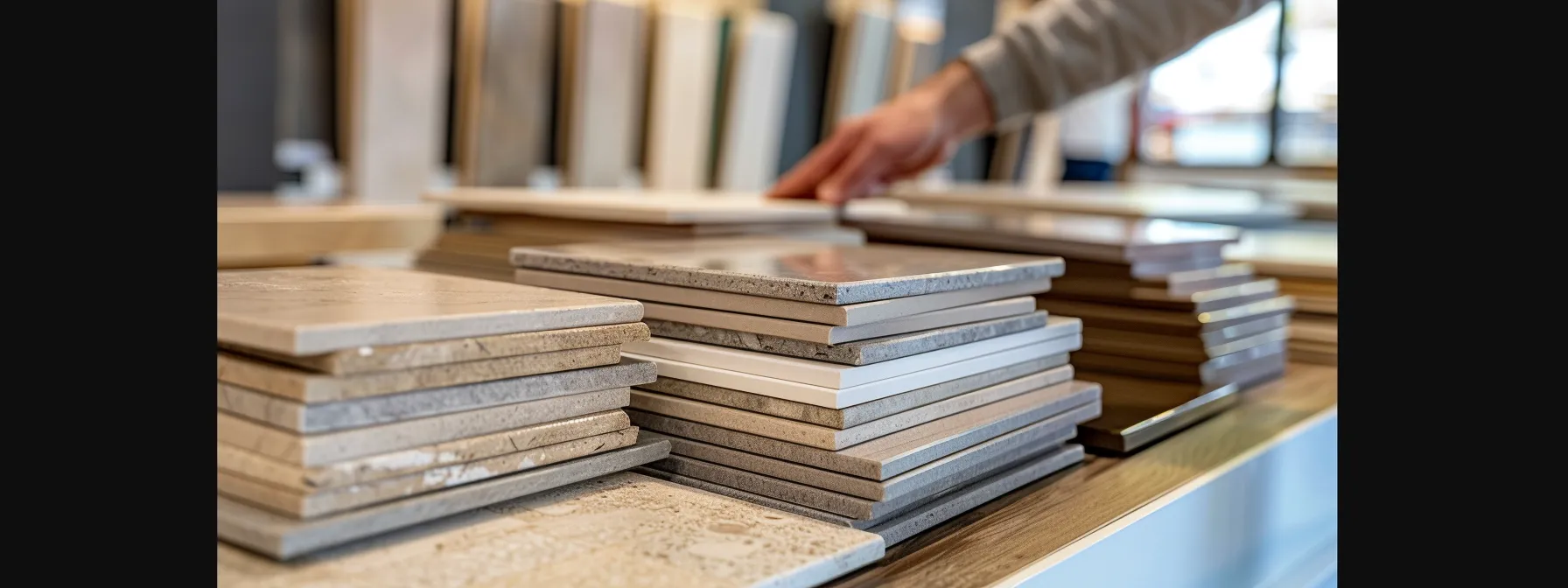
Evaluating the environmental implications and safety profiles of both polyester and polyurethane is essential as you consider your options for countertop resurfacing. Polyester, known for its ease of application during the curing process, often contains fewer harmful components compared to some alternatives. This eco-friendliness can extend to its role in wood finishing options, maintaining a commitment to reducing overall environmental impact. On the other hand, polyurethane is a robust candidate in performance but does raise concerns regarding its interactions with certain acids and chemicals during usage, particularly in kitchen environments. When making choices for a cutting board or other food-related surfaces, assessing these factors helps in determining the most reliable and sustainable option for your needs. As you weigh these options, consider how they align with your values; after all, a comprehensive review may lead you to click “add to cart” with confidence.
Eco-Friendliness of Polyester in the Resurfacing Process
Polyester offers an eco-friendly advantage in the countertop resurfacing process, as it typically contains lower levels of harmful chemicals compared to some other materials. This characteristic makes it safer for both your indoor environment and health, as it emits fewer volatile organic compounds (VOCs). When maintaining your surfaces, using mild soap and water can help you avoid introducing additional harmful substances while keeping your countertops clean and pristine:
- Lower levels of hazardous chemicals
- Reduced VOC emissions for a healthier indoor atmosphere
- Simple maintenance with standard soap and water
Polyurethane‘s Environmental Impact and Usage Safety
Polyurethane coatings are highly effective but come with certain environmental considerations. They often contain higher levels of volatile organic compounds (VOCs), which can contribute to air quality issues during application and curing. Therefore, ensuring adequate ventilation and using appropriate safety gear while working with polyurethane will help mitigate any potential health risks associated with its use.
